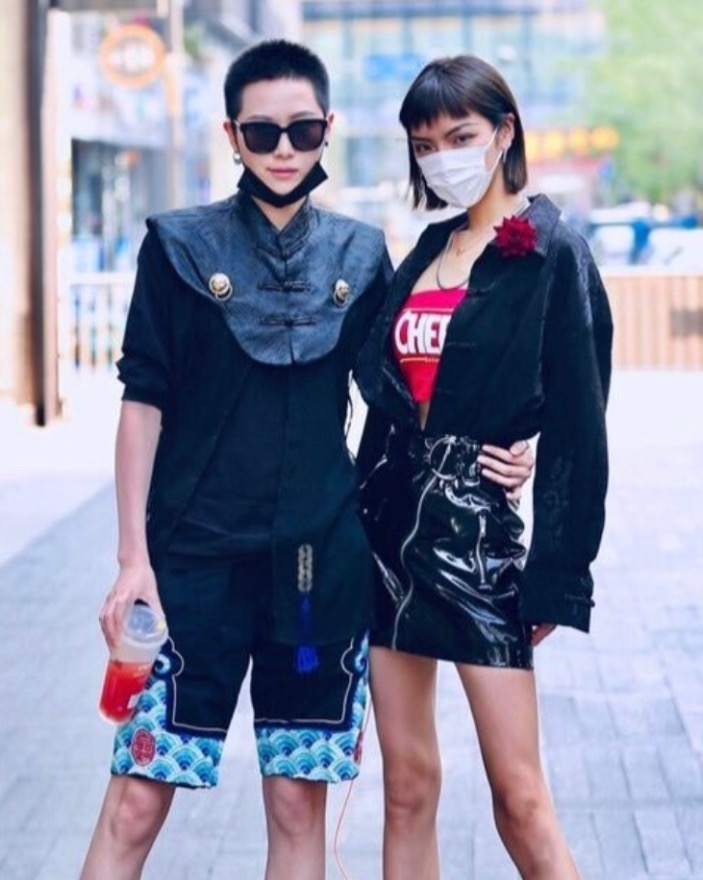Teen fashion around the world: a series—seventh stop, China

More stories from Coco Corey
TikTok doesn’t exist in China, so how is it that some of the most popular depictions of China’s streetwear are from TikTok videos? ByteDance, the company that owns TikTok, also owns Douyin, China’s version of TikTok. While Douyin is owned by the same parent company, China’s teens under the age of fourteen are restricted to forty minutes of viewing time a day, and the app is unavailable to them between the hours of 10 p.m. and 6 a.m.
While their younger teens have limited access to Douyin, it is arguably no less influential than TikTok is in the United States. The incredibly popular slow-motion videos showing “random” people on the street in amazingly fashionable ensembles began on Douyin. These videos show, what we are to believe, average residents walking the streets of China. There is an almost synchronized deadpan look into the camera mid-way through the video. The more I read, the more I have discovered, like most everything on Instagram and TikTok and other social media platforms, that these encounters are not by chance. Influencers meet up with content creators to shoot preplanned videos. Nonetheless, taking the encounter aspect out of it, the outfits are less spectacular.
Beijing, where most of these videos are shot, is trending toward becoming the city to take over street “high” fashion. This fashion encompasses looks so diversified that it’s hard to classify them into any one category. Androgynous looks are very chic, but so is Hanfu, the traditional clothing style of the Han Chinese—which includes knotted buttons and seams cut diagonally—that is making a resurgence. It is not uncommon to see a video clip with one person dressed in Hanfu, next to one dressed in a 90s vintage plaid skirt look, next to one in a black and white couture suit.
“Wei Wei, a 25-year-old former model who now works at a kindergarten, notes that it is not just Hanfu designs that are having a moment. ‘Every part of China has a different culture… [and] Beijing has more ethnic minorities [than Shanghai],’” Wei Wei says, explaining that the fashions found in the capital offer more of a cultural mix than other parts of China (Beijing’s independent fashion designers are making a bold statement, 2020).
The striking element of the fashion is the avant-garde boldness of it; it’s edgy and precise. The outfits are definitive. There doesn’t seem to be any mixing and matching element, instead, it is an all one direction vibe. While mixing and matching can be charming, in its absence, a certain elevated sophistication emerges. There’s no deconstructing a look, it’s obvious, forthcoming, and right in front of you.
There’s a risk-taking element that we don’t embrace in the U.S. “Friends Jeffery Dang and Nava Rose, were instantly drawn to the confident energy that many of the Chinese street-style stars exude. ‘Chinese street style inspires me [because of] the versatility and confidence that each person has,’ says Dang. ‘Each person has their own original and specific taste in clothing, whether they are styling basics, cultural wear, or loud pieces.’ They both feel it’s resonating with TikTok users in the U.S., especially as they see American casual style as decidedly less avant-garde than it is in Asia. ‘The majority of us do not dress like that—but we all wish we did,’ says Dang” (Allaire, 2020).
China is a stark contrast from our last stop in Australia, the land of casual, almost Bohemian or surfer chic styles. If it’s a casual baby tee with a pop culture message on it, it is paired with structured items. If it is an oversized pair of overalls, they are worn with an intention, not for comfort or ease; fashion in China is spot-on and taken seriously.

Coco Corey is a senior entering her second year writing for The Central Trend. Coco plays on the tennis team, and she is also one of the four student section...



























































































